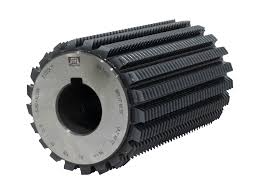In today’s ever-changing business environment, security threats are everywhere which is why it’s crucial that companies strengthen their security. While cybersecurity has received a lot of attention but its importance to physical security shouldn’t be undervalued. Implementing strong physical security strategies is vital to safeguard your property as well as your people and systems from loss, theft and unforeseeable circumstances.
Understanding Physical Security
Physical security encapsulates the protection of hardware, people software, data, physical assets and property from potential dangers or incidents that could cause damages or losses. In today’s world physical security is in line with cybersecurity as a crucial element of overall security strategies. It is a defense against a variety of threats, such as burglary, vandalism and theft or fire, flood and natural catastrophes. A successful physical security program incorporates the latest technology and hardware to build a unified and complete defense system.
Advantages to Physical Security
Before you implement physical security measures conducting an exhaustive risk assessment is essential. The assessment will identify current weaknesses and risks in your security plan, allowing you to design strategies to remove them. With the proper methods and tools to reduce the chance of security breaches or losses, assuring the longevity of your company. Setting out your objectives and requirements will help you avoid overspending or insufficient security measures.
The 2022 trends in physical security focus on three key aspects three main components: Access Control Monitoring, Surveillance and testing. Success of any plan to protect your home depends on the efficiency in monitoring these elements.
Access Control

Controlling access to materials, facilities and locations is crucial to ensure the security of your business. The restriction of access to particular assets improves control and encourages an organized strategy for security. The most common access and exit points act as the primary defense points for the majority of physical security systems. Using defense mechanisms like fencing, gates screens, gates, and CCTV cameras act as a deterrent to intrusions. Modern access control systems offer numerous options for selecting the one that is most suitable for your requirements.
When selecting an electronic security system take into consideration whether it operates on premises or in the cloud.
Cloud-based security systems are typically highly recommended because of their remote management capabilities. They provide ease in managing data and also facilitate the internal integration of security systems.
Surveillance
Surveillance is a vast array that includes patrolling guards, security cameras on CCTVs, monitored alarms surveillance video, infra-red motion sensors, and monitoring of every movement. These surveillance devices serve a vital role in recording and monitoring activity within your property. Furthermore, the mere appearance in CCTV (or video security) equipment can serve as a deterrent for potential squatters or intruders. The video footage recorded in real-time could be a valuable source of evidence for the identification of criminals in legal cases.
Testing
After your security system has been put in place it is crucial to conduct thorough testing, which includes security exercises and fire drills. These tests can help you identify weaknesses or flaws in your security system. Conducting emergency and security drills within your company makes sure that all employees are able to access physical security measures. Engaging your employees in discussions regarding security measures for physical environments has double benefits. It improves security for employees as well as acts as a deterrent for fraud in the workplace since workers are informed of strict physical security measures that are in place.
Conclusion
In the end, even as the digital age is constantly evolving but physical security is still the crucial element in a comprehensive security plan for companies. Implementing the appropriate physical security procedures is crucial for safeguarding people, assets as well as data. By paying attention to access Control surveillance, Access Control and Testing, businesses can establish a solid security system that can withstand a variety of dangers. The balance between cybersecurity and physical security is crucial in today’s fast-paced business environment, to provide complete security against ever-changing threats.




